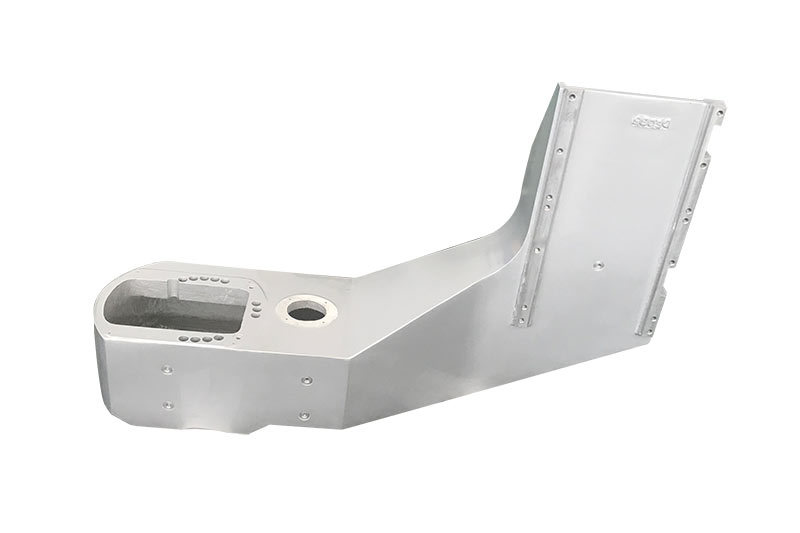Robotic arm industrial robots parts processing
Release time:2024-10-18
Cast aluminum alloy is an aluminum alloy that fills the mold with molten metal and obtains blanks of various shapes. It has the advantages of low density, high specific strength, good corrosion resistance and casting manufacturability, and is less restricted by the structural design of parts. Divided into Al-Si and Al-Si-Mg-Cu-based medium-strength alloys; Al-Cu-based high-strength alloys; Al-Mg-based corrosion-resistant alloys; Al-Re-based heat-strength alloys. Most require heat treatment to strengthen alloys, eliminate internal stress in castings, and stabilize microstructure and part size. Used in the manufacture of beams, gas turbine blades, pump bodies, pylons, hubs, air intake lips and engine casings, etc. It is also used in the manufacture of automobile cylinder heads, gearboxes and pistons, instrument housings and supercharger pump parts.
The aluminum alloy used for the required parts is directly obtained by the casting process. It is required to have ideal castability: good fluidity, less shrinkage, hot cracking and cold cracking tendency, less segregation and inhalation. The element content of cast aluminum alloys is generally higher than that of corresponding deformed aluminum alloys, and most alloys are close to eutectic compositions.

Industrial robots parts processing plays a crucial role in the modern manufacturing industry. It involves the precise crafting and manipulation of various components that make up these advanced robotic systems.
The process begins with the selection of high-quality materials, such as metals and alloys, which are designed to withstand the rigors of heavy-duty industrial use. Skilled technicians and engineers use state-of-the-art machining techniques to shape and form these materials into the exact specifications required for the robot parts.
Computer numerical control (CNC) machines are often employed to ensure accuracy and repeatability in the processing. These machines can create complex geometries and tight tolerances, allowing for seamless integration of the parts within the industrial robot. Surface finishing is also an important aspect, as it not only enhances the appearance but also improves the durability and functionality of the parts.
During industrial robots parts processing, strict quality control measures are in place to guarantee that each component meets the highest standards. This involves rigorous testing and inspection at every stage of the manufacturing process to identify and address any potential flaws or defects.
The processed parts include crucial elements like gears, bearings, actuators, and sensors. These components work in harmony to enable the industrial robot to perform precise movements and tasks with efficiency and reliability. Advanced manufacturing techniques are constantly being developed and refined to improve the performance and capabilities of industrial robots.
Moreover, the design and processing of these parts take into account factors such as weight reduction, energy efficiency, and durability. This ensures that the industrial robots are not only highly functional but also cost-effective and sustainable in the long run.
In conclusion, industrial robots parts processing is a complex and sophisticated field that is essential for the success of modern industrial manufacturing. It combines cutting-edge technology, skilled craftsmanship, and strict quality control to produce high-quality parts that power the next generation of industrial robots. The continuous innovation and improvement in this area will drive the growth and competitiveness of industries in the years to come. industrial robots parts processing, industrial robots parts processing, industrial robots parts processing.
More news
Contact Us
Address: Qiqiao Village, Sian Town, Tongzhou District, Nantong, Jiangsu Province, China.
Telephone: 0086-513-68856085 0086-513-68856090
Fax: 0086-513-68856080
Mobile: 0086-13862902715
E-mail: masahirok@163.com
© 2024 KOIZUMI MACHINERY CO.,LTD. ALL Rights Reserve.


